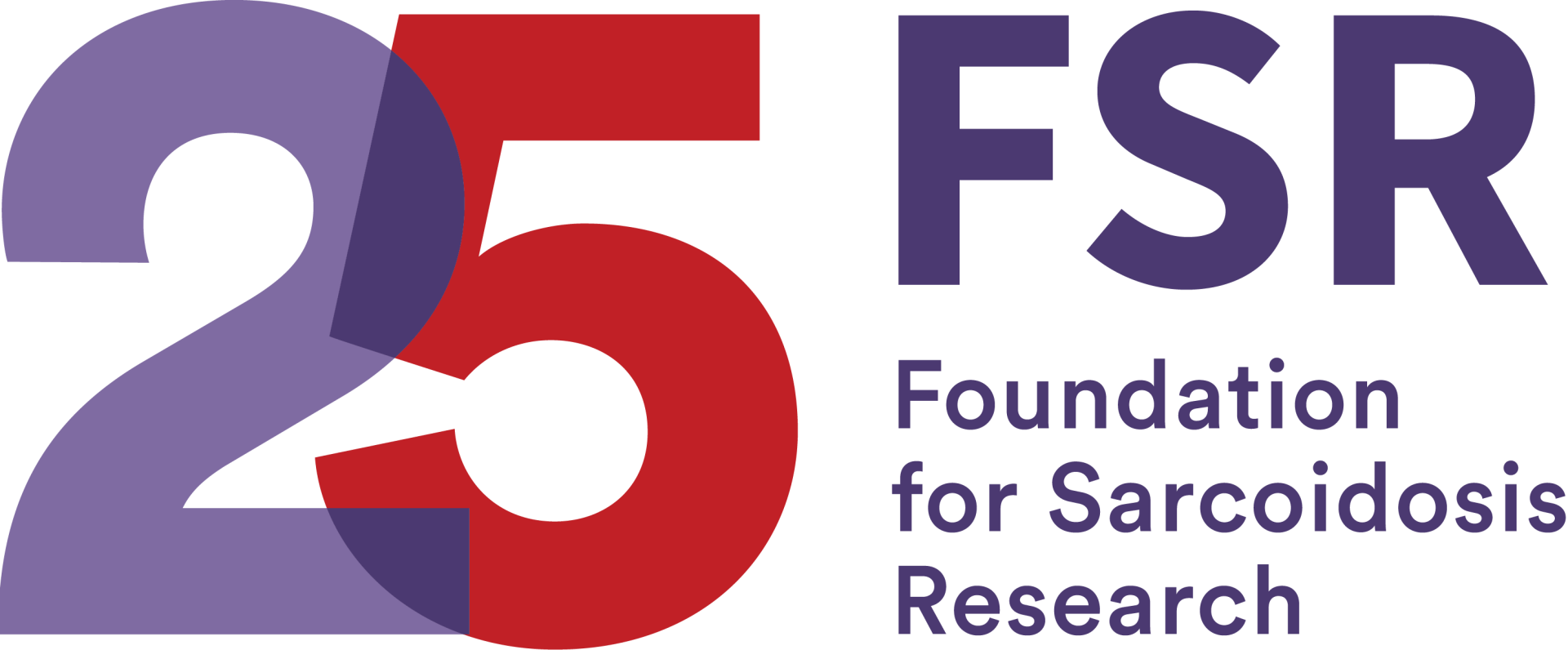If you were one of over 500 people worldwide who joined FSR for our annual K.I.S.S. 5K and virtual walks, you are part of the movement that will put sarcoidosis on the map – the same map as other big name diseases with national walk events that bring in millions of dollars for research every year. Furthermore, you are helping us to rally a worldwide community of sarcoidosis warriors and their families who believe as much as we do that sarcoidosis is not getting the attention it deserves – not only from physicians, researchers, and our own networks, but also those who have no personal connection to the disease. Sarcoidosis can affect affect people of any age, race and gender with devastating consequences, therefore, it needs to be a concern of everyone.
If we can continue to grab the attention of the masses – the serious runners looking for a themed race for a good cause, the family on a walk in the park that joins our post-race party, the individual who stumbles across our Facebook page and sees the inspirational and heartbreaking #SarcoidStories being shared – then we’ll see more individuals join our community every year, thus increasing our reach and finally getting sarcoidosis and the desperate need for research the recognition it deserves.
When did walking become a way to show your support for a cause?
One of the earliest national fundraising walk events was the March for Babies- formerly called WalkAmerica – held for March of Dimes, which started in the 1970s after local “walk-a-thons” had started raising money for the cause. The idea came from the concept of telethons, which had become a popular way to fundraise for a charity in the 1950s and 60s. Over the years, the March for Babies walks have grown across the country, raising over $2 billion to date.
Another popular fundraising walk event, Relay for Life, started in 1985 when a lone doctor, Gordy Klatt, walked around an outdoor track at University of Puget Sound for 24 hours. He covered 83.6 miles and raised $27,000 in that first year. Since then, thousands of Relay events have taken place across the globe, estimated to have raised over $5 billion for cancer research.
These are some of the largest and most successful charity walk events in the world. According to Run USA, there’s estimated to be over 26,000 road race events events each year, the majority of them supporting charities. This doesn’t even include the walks and other events benefiting charity.
However, runners don’t have to attend a charity walk to support their favorite organization. Many dedicated runners will fundraise for a cause when they’re competing in a race. Organizations will often sponsor the entrance fee if the runner makes a fundraising goal.* This tradition first began in 1988 when the Leukemia and Lymphoma Society launched a training program for runners who wanted to fundraise for them. Now, this is a popular choice among serious runners- in 2013, 75% of the London Marathon’s 34,278 finishers were running for a charity, collectively raising a total of $85 million (USD).
The K.I.S.S. 5K walks started in 2014. In just a few short years, we’ve grown our official and virtual walks to the point of having over 500 registered participants this year between the official Nashville location, 17 independent walk locations around the world, and virtual walkers who will participate in their own local communities!
*We’re also excited to be launching a half marathon program so dedicated runners who want to support sarcoidosis research can run as sponsored FSR competitors! Start thinking about the runners in your life who might support your fight in this meaningful way and keep an eye out for more information later this Spring!
So what does this money really do?
Since 2014, FSR’s K.I.S.S. walks have collectively raised over $124,000…and that number is still growing. This money joins the rest of FSR’s fundraising efforts and donations, which go towards supporting the advancement of sarcoidosis research – an area in which FSR has invested over $3 million dollars since being founded in 2000.
Clinical Studies Network: Launched in 2015, FSR is funding a consortium of 8 research centers- the first of its kind- totaling $480,000 invested over the two years since it began. The network of centers, scattered across the US and Europe, allows these researchers to compare research outcomes of the same studies, globally. Before the establishment of our CSN, there was little collaboration and data sharing between sarcoidosis researchers, especially on the global scale. The current CSN members are working on a two-year grant-funded project which will culminate in a published report that we anticipate will help make huge strides in the world of sarc research.
Disease Model: We’re investing $450,000 in our latest project, the development of a sarcoidosis disease model. By funding several promising research projects from around the globe, our aim is to find a disease model, whether animal, tissue or otherwise. This is a step that is absolutely necessary for the discovery of new treatments for sarcoidosis- without it, no new experimental drugs can undergo the rigorous testing needed to gain FDA approval. The initial Request For Applications was opened in Fall of 2016 and funding will begin later this Spring. FSR’s intention is to fund projects that will gain attention from other funders with more resources to invest including NIH and pharmaceutical companies, many of whom have been reluctant to join us in this space. Eliminating this huge obstacle in drug development would incentivize industry to invest in new sarcoidosis treatments and fast-track FDA approval for existing off-label therapies which often remain out-of-reach to patients due to insurance barriers.
Additional Research Grants: Since 2005,in partnership with the American Thoracic Society, FSR has awarded over $795,000 in research grant funding for promising, young sarcoidosis researchers, which has given legs to their projects and led to even more significant funding for these researchers post-award.
Learn more about FSR’s research agenda:


